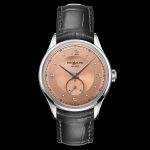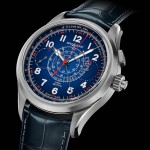Up Close: Montblanc Heritage Small Second Limited Edition 38
Brilliant movement finishing in an under-appreciated watch.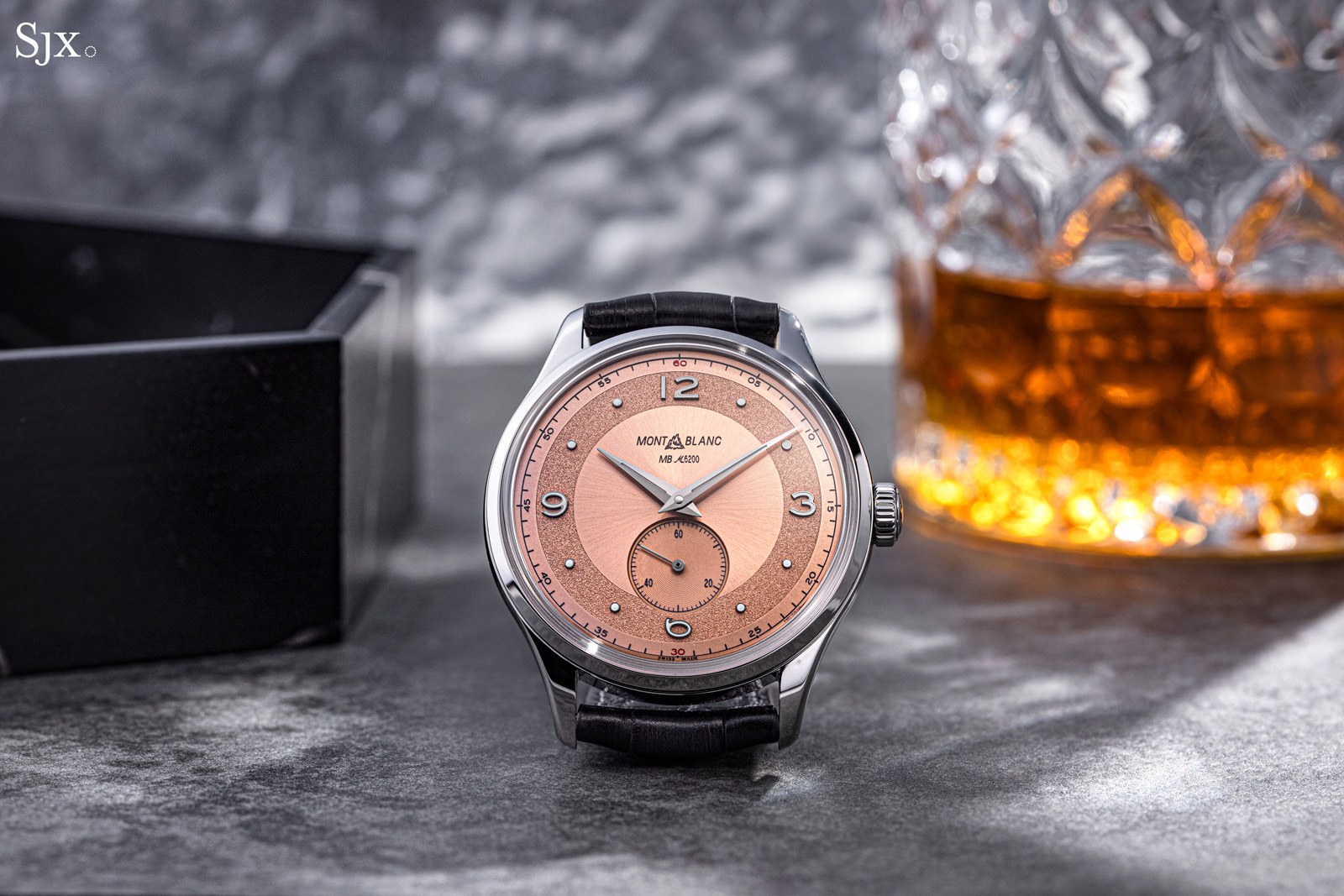
For over a decade now, Montblanc has been attempting to become a serious watchmaker, an endeavour that started after its acquisition of Minerva. Despite having found only modest success there, the pen maker-turned-luxury-goods-house has produced a good number of proper haute horlogerie watches – mostly chronographs and some with surprisingly accessible prices – many of which have gone under appreciated due to the brand name.
A perfect example of the Minerva mechanical excellence and sharp pricing is Heritage Small Second Limited Edition 38 that was introduced in 2019. The Heritage Small Second is all about the movement, specifically a new-old-stock Minerva calibre from the early 2000s finished to an impressive, artisanal standard. Despite the exceptional movement, the watch never really gained much recognition (much like Montblanc’s other Minerva offerings), but it is certainly worth a revisit.
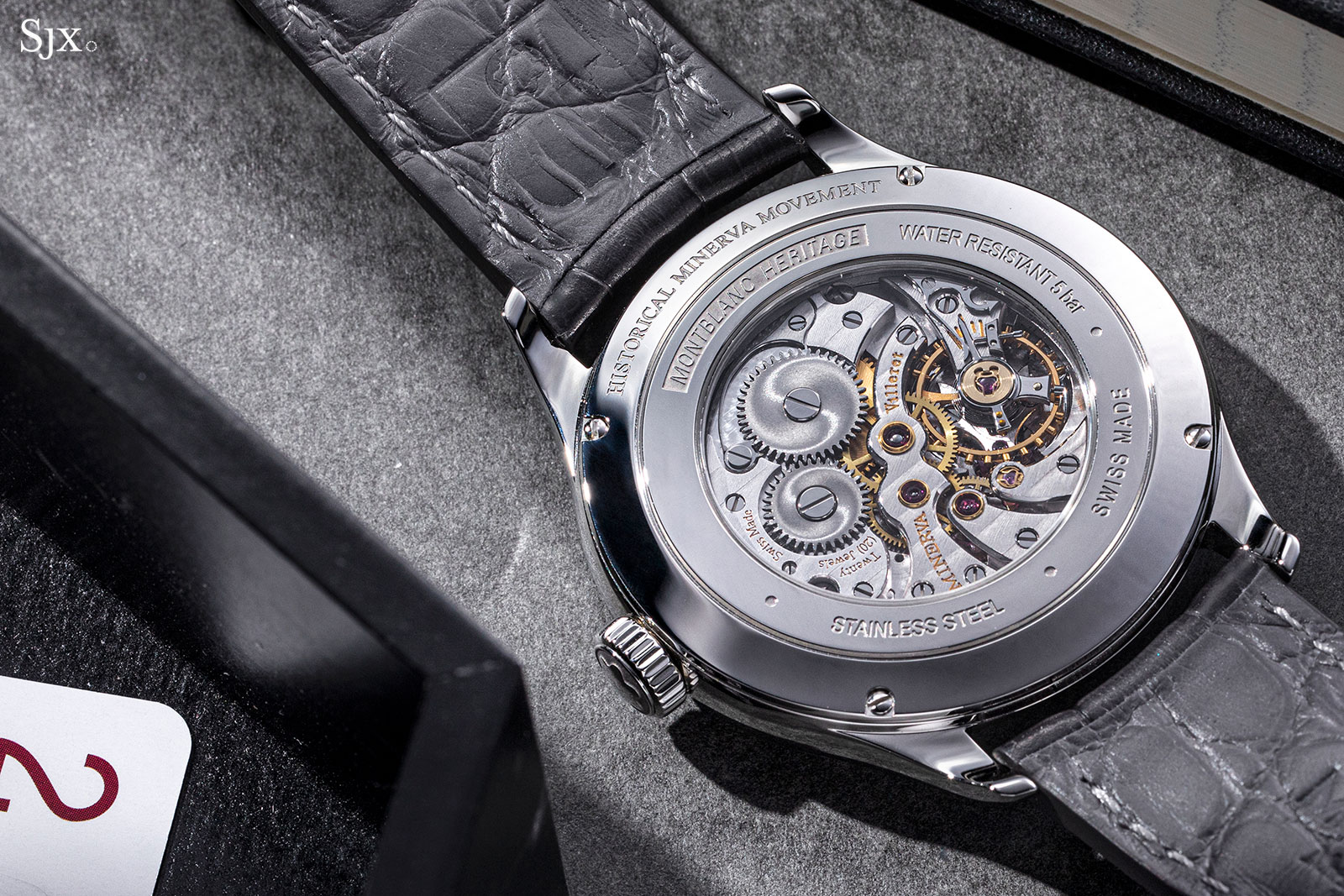
Initial thoughts
With its retro, two-tone dial in faddish “salmon”, the Heritage Small Second looks like one of the many vintage-inspired watches that has been (re)produced to excess by many brands in various price segments. But this stands out for the impressive degree of detail in the movement, which is finished to a degree comparable to that of artisanal independent watchmakers.
The hand-wound MB M62.00 inside is the star. According to Montblanc, it’s an “untouched” calibre from the attic made during a period when Minerva’s then-owners were dedicated to elevating the brand to the high horology hall of fame. The calibres were redesigned to maximise the potential for hand finishing.
Hand finishing is on all display with the MB M62.00, which even boasts polished teeth on the barrel ratchet and crown wheels. Though a new-old-stock movement in itself is nothing novel, a “NOS” calibre of this quality is an achievement in its own right.
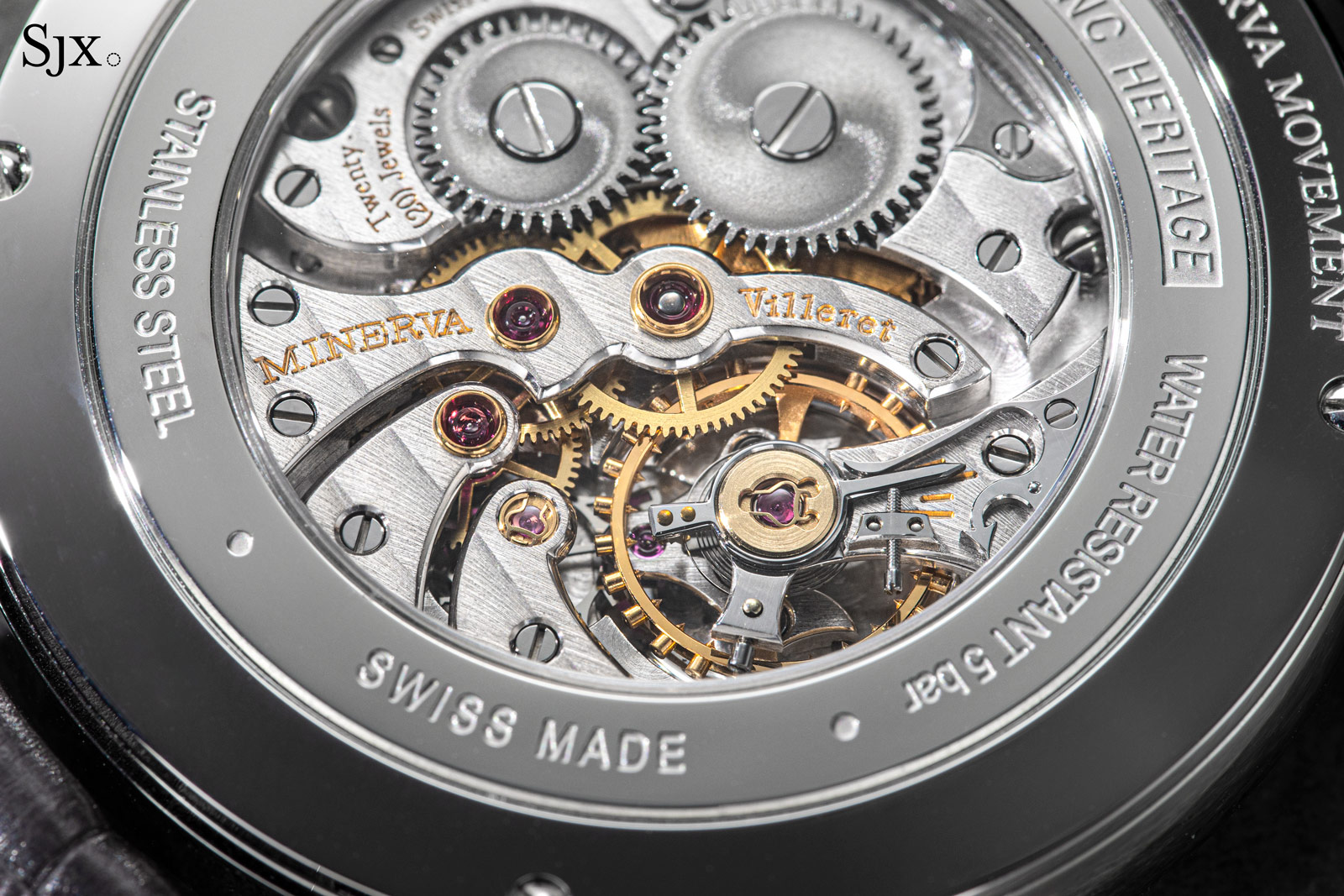
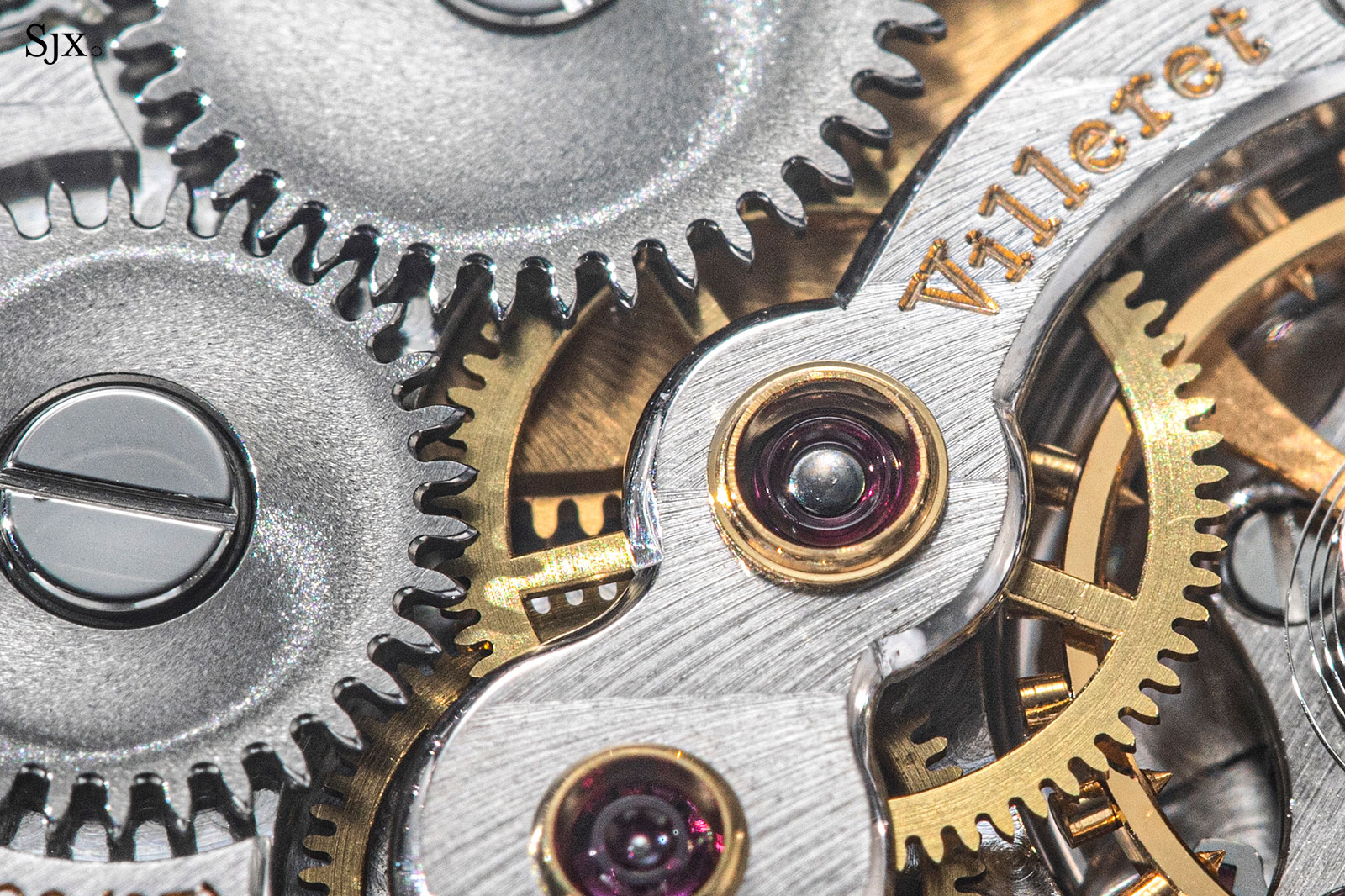
Equally impressive for me is the dial. I appreciate its attention to detail, including the two-tone effect thanks to the frosted chapter ring that adds a touch of refinement. That said, the sub-seconds sits a little too high on the dial due to the relatively large, 39 mm case. At the same time, the “salmon” finish is a pretty but a bit overused right now due to its popularity.
A retro Montblanc logo takes pride of place under 12 o’clock (with the calibre name just below), while “Minerva” is relegated to a “secret signature” on the minute track. Inverting the two would have certainly given this wider recognition, but as it is now, the Heritage Small Second was largely something for those in the know, which is perhaps why only 38 pieces were made. With a retail price of about US$20,000, the Heritage Small Second was a value proposition considering the movement quality, so I hope Montblanc has a few more of these movements hidden away.
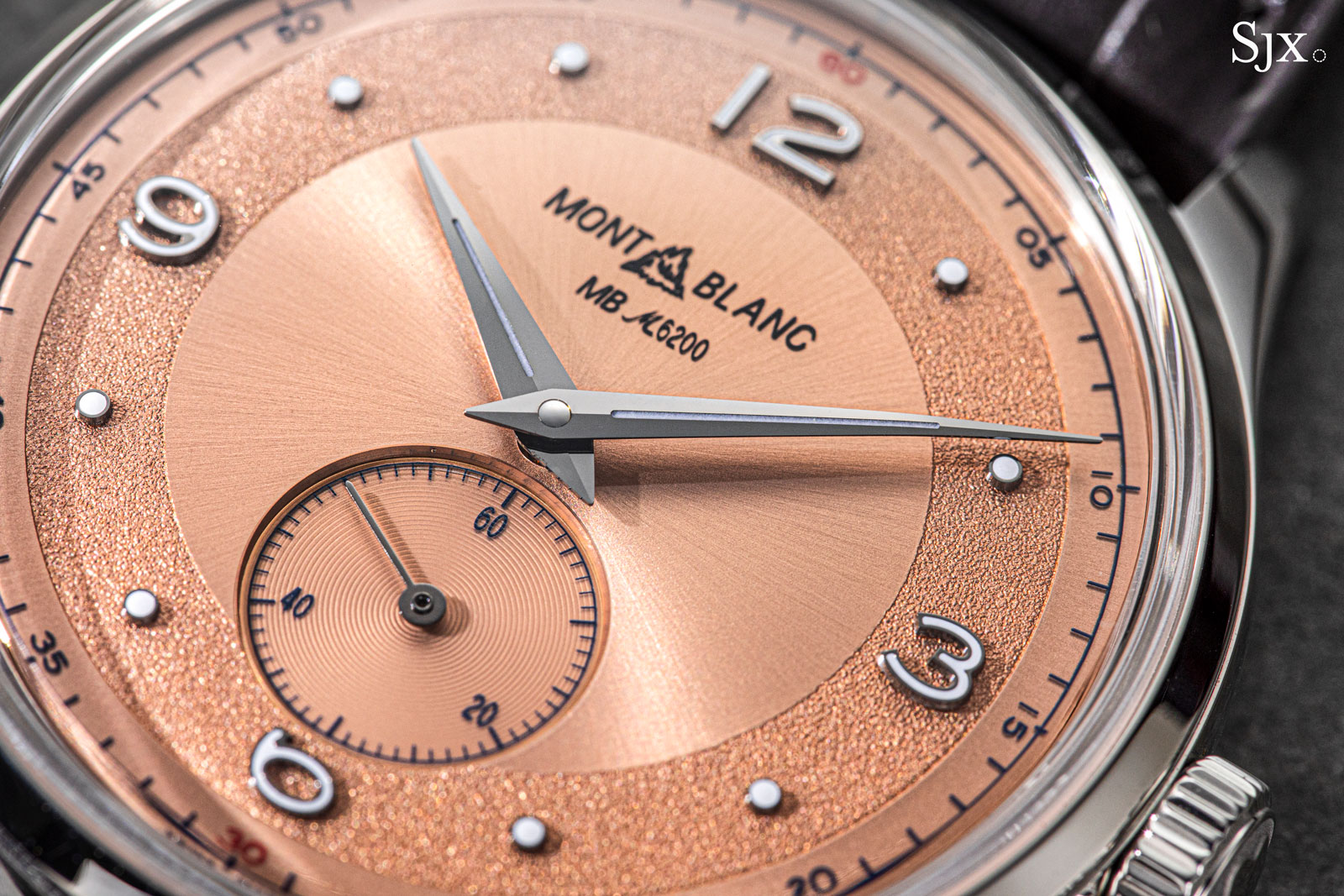
The Minerva connection
The Heritage Small Seconds is a tangible extension of the historical manufacture Minerva, which was acquired by Richemont in 2006 and then folded into Montblanc. Founded in 1858 in the town of Villeret, Minerva built its reputation with high-quality stopwatches and chronographs.
But in the modern era, one of its best known models was the time-only Pythagore. In 1943, Andre Frey, the nephew of the second owner of the brand, designed the cal. 48, a hand-wind movement designed according to the golden ratio, supposedly first theorised by the Greek mathematician Pythagoras – the resulting watch was named the Pythagore.
The cal. 48, as it was then, was a solid but plain movement. But in the 1990s the movement was dressed up for a display back and the Pythagore soon became popular amongst watch enthusiasts.
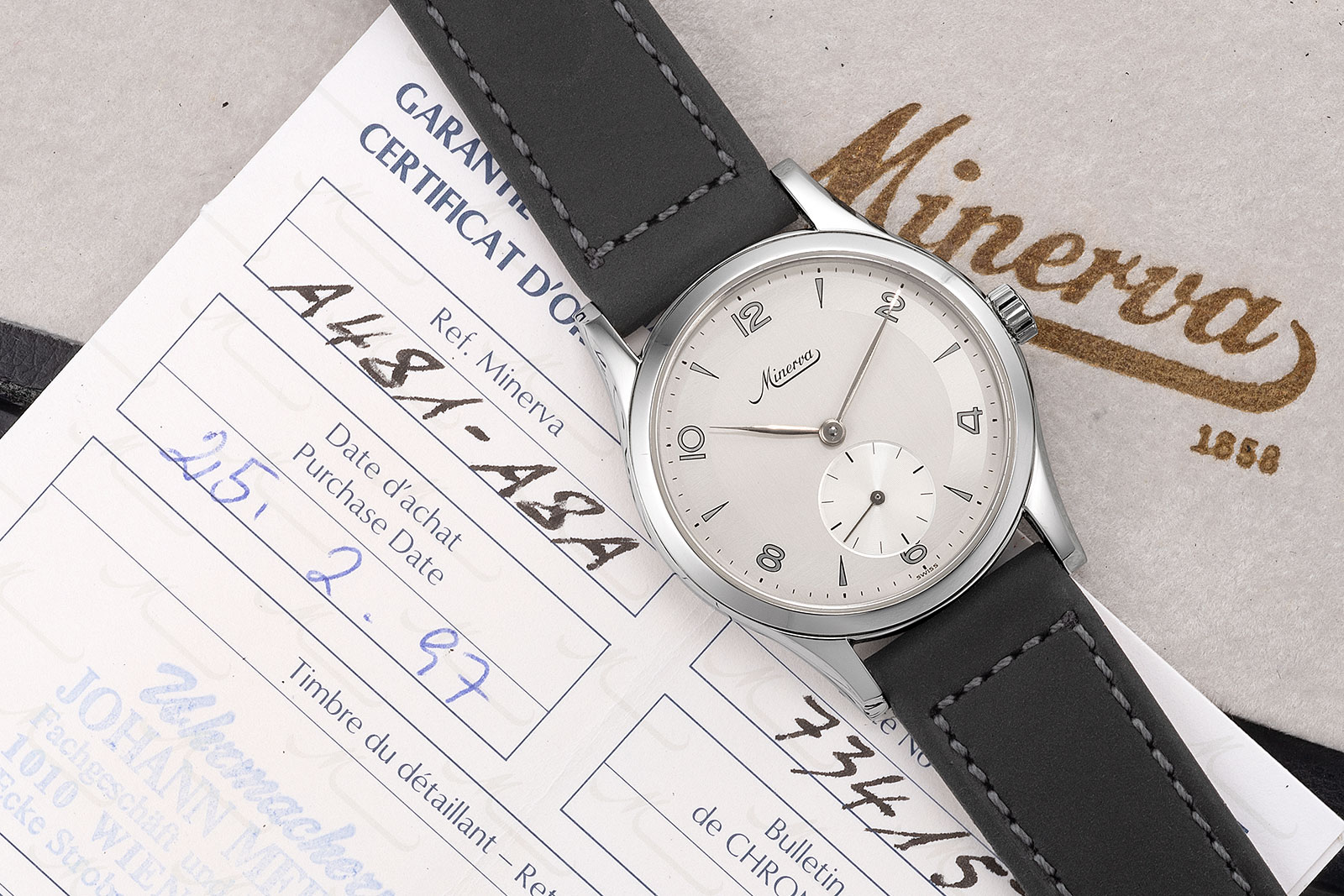
An example of a 1990s Minerva Pythagore. Image – Phillips
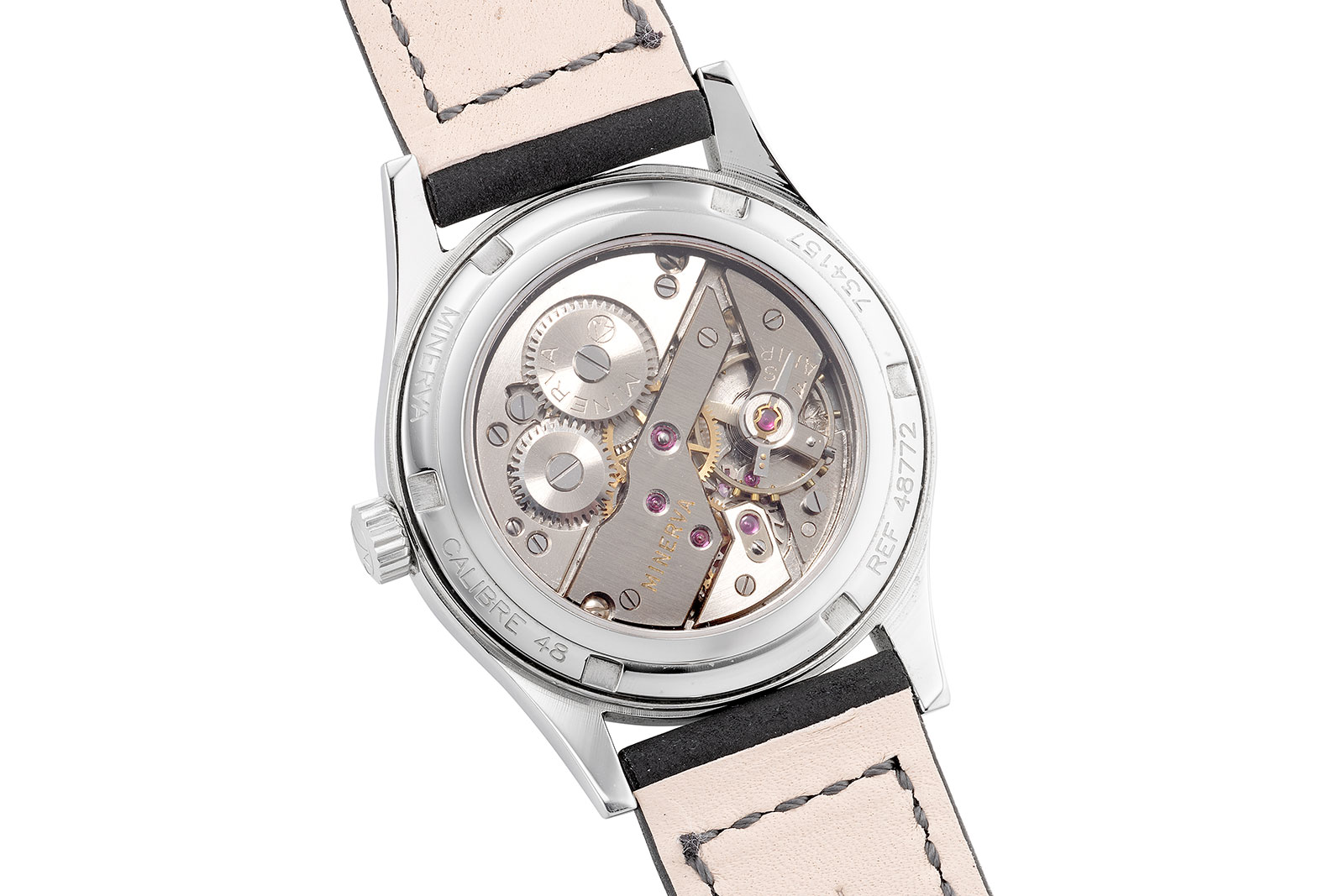
And the cal. 48 in its original, undecorated form. Image – Phillips
The next chapter of the cal. 48 – and for Minerva as a whole – began in 2000 when the brand was taken over by Emilio Gnutti, an Italian business tycoon whose financial struggles meant his ownership was short-lived. A watch lover who also collected Ferraris and other exotic automobiles, Mr Gnutti transformed Minerva into a high horology house almost overnight by redesigning its stable of in-house movements and bestowing upon them exceptional finishing.
When Richemont landed Minerva six years later, it was buying a factory, a historical archive, and trove of beautiful calibres, many of which were already complete. The MB M62.00 inside the Heritage Small Seconds is essentially a Gnutti-era calibre.
Vintage style and mechanics
Unsurprisingly, the design of the Heritage Small Second references the Minerva Pythagore. Designed in a similar manner but with a contemporary feel, the Heritage Small Seconds attempt to capture the mid-century aesthetic of the vintage Pythagore, right down to the old-school Montblanc logo that was original found on its pens of the 1920s and 1930s.
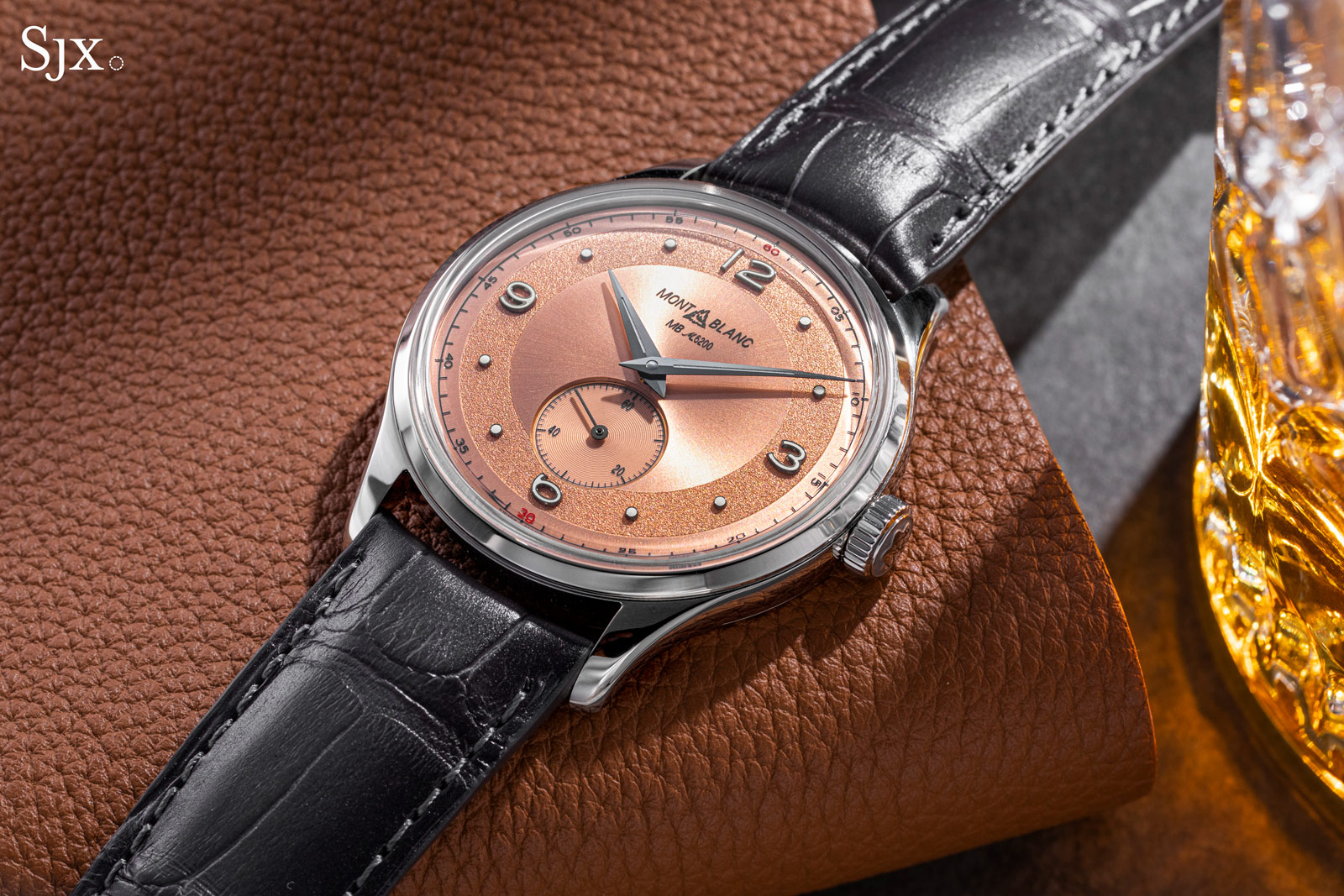
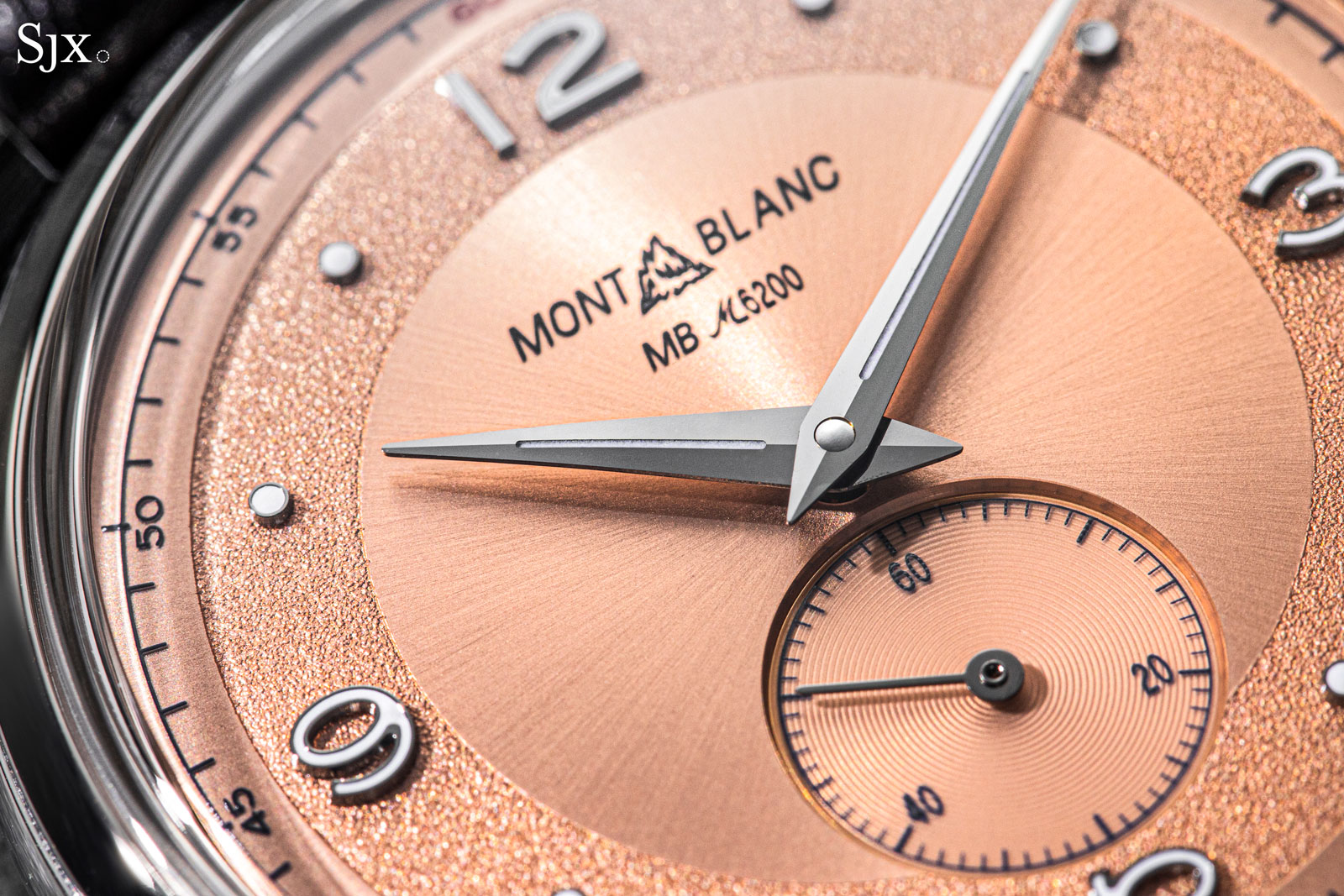
While the design is somewhat generic in its retro style, the dial is finely executed and nicely detailed. Fashionably pink in hue, the dial is two-tone thanks to the granular finish on the chapter ring that has applied hour markers. The grained finish contrasts with the radial brushing that catches the light.
An odd quirk of the dial are the red accents at six and 12 o’clock on the minute track. They are probably there to add colour to the dial, but they lack a logical purpose, making them unnecessary and distracting.
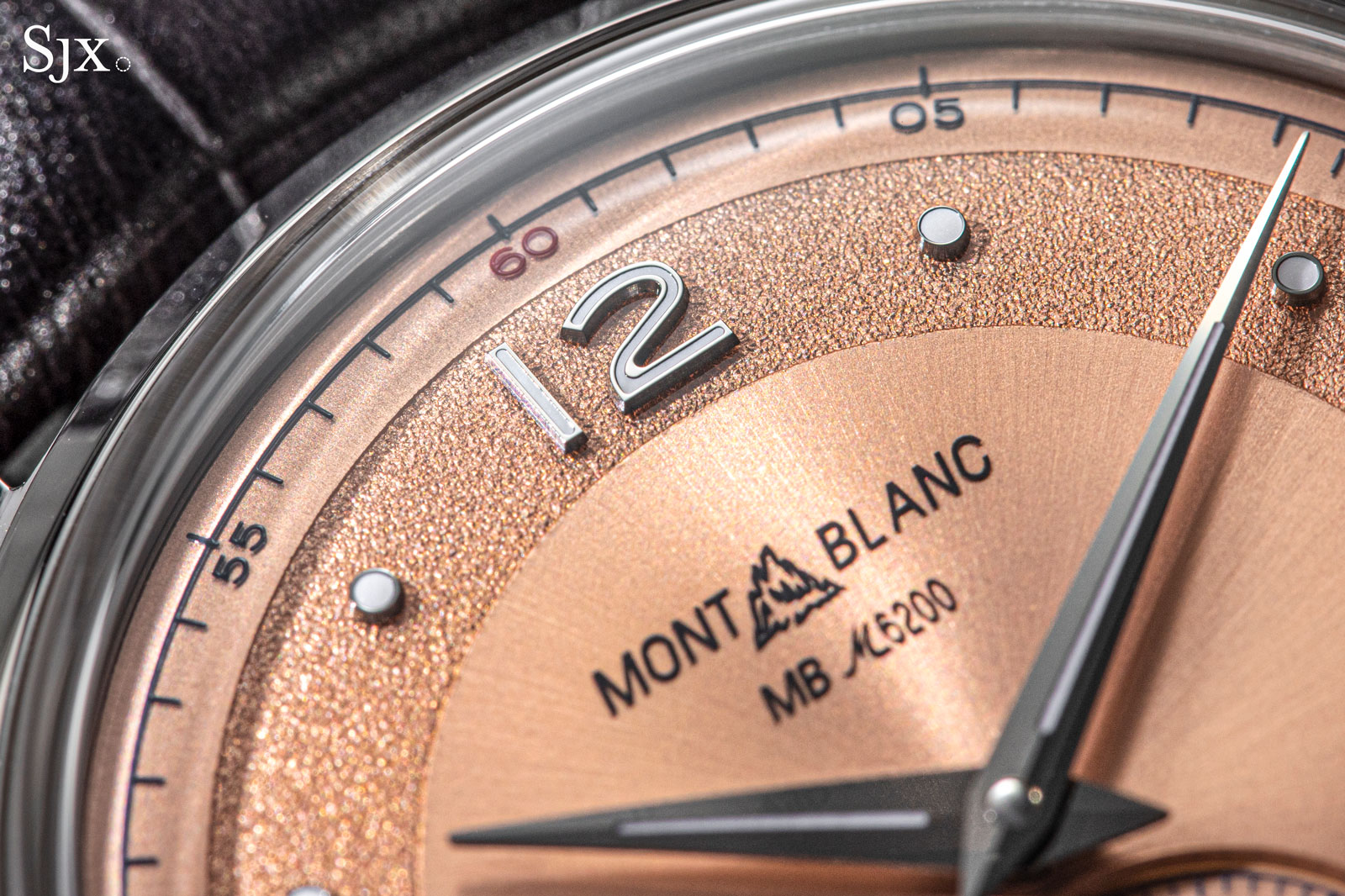
And hidden between and five o’clock is the “secret signature”, which is the first instance that the Minerva name is appearing on the dial of a Montblanc. If anything, the signature is too secret. Given the strength of the Minerva name as a watchmaker, “Minerva” would look perfectly at home alongside the Montblanc name.
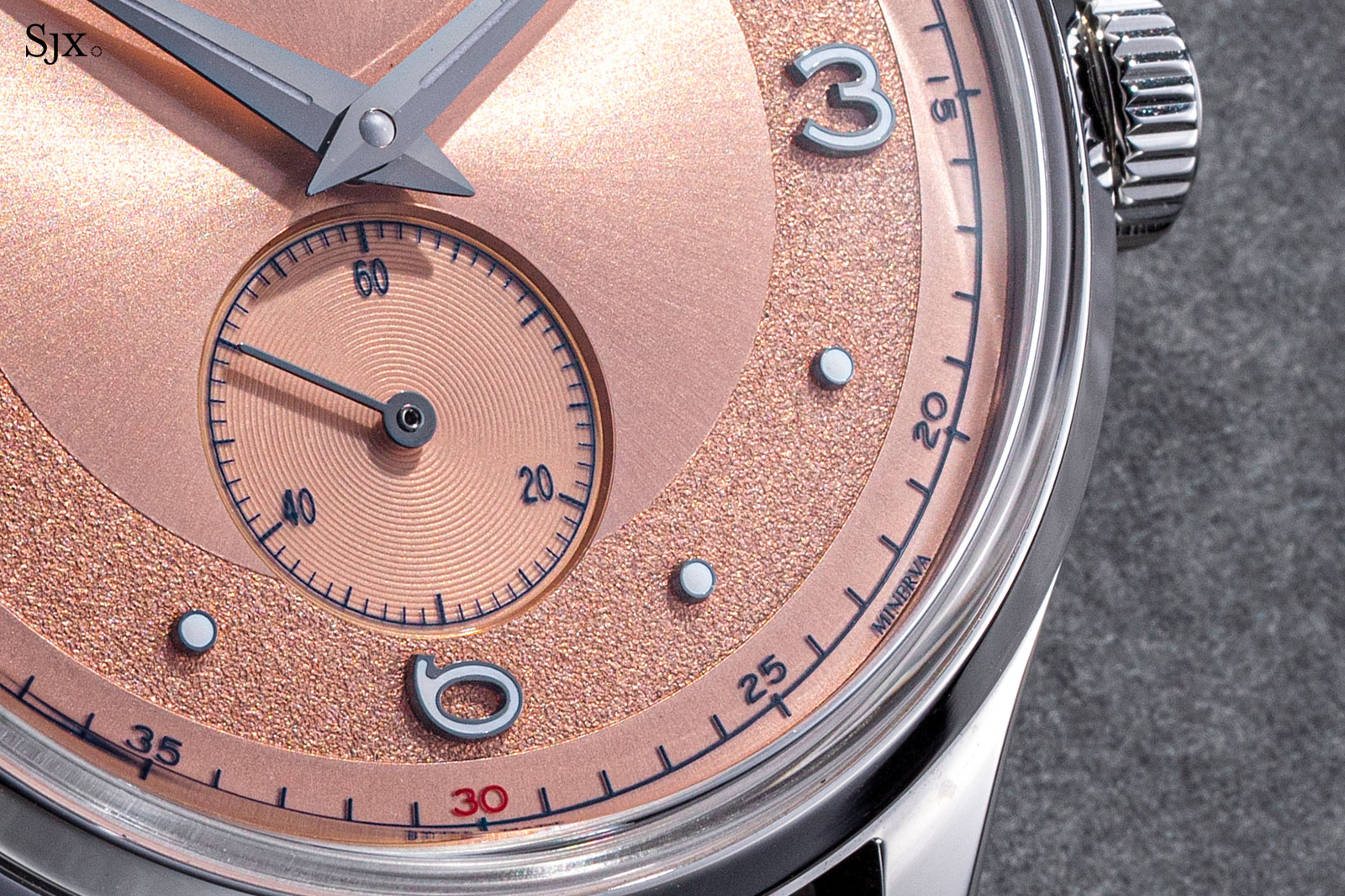
The barely-there signature
Compared to Montblanc’s other Heritage models (that do not contain Minerva movements) that are 40 mm, the Heritage Small Seconds is scaled down slightly to 39 mm in diameter, while the height is 9.45 mm. While the size is still clearly modern, the dimensions are compact enough to evoke a vintage watch.
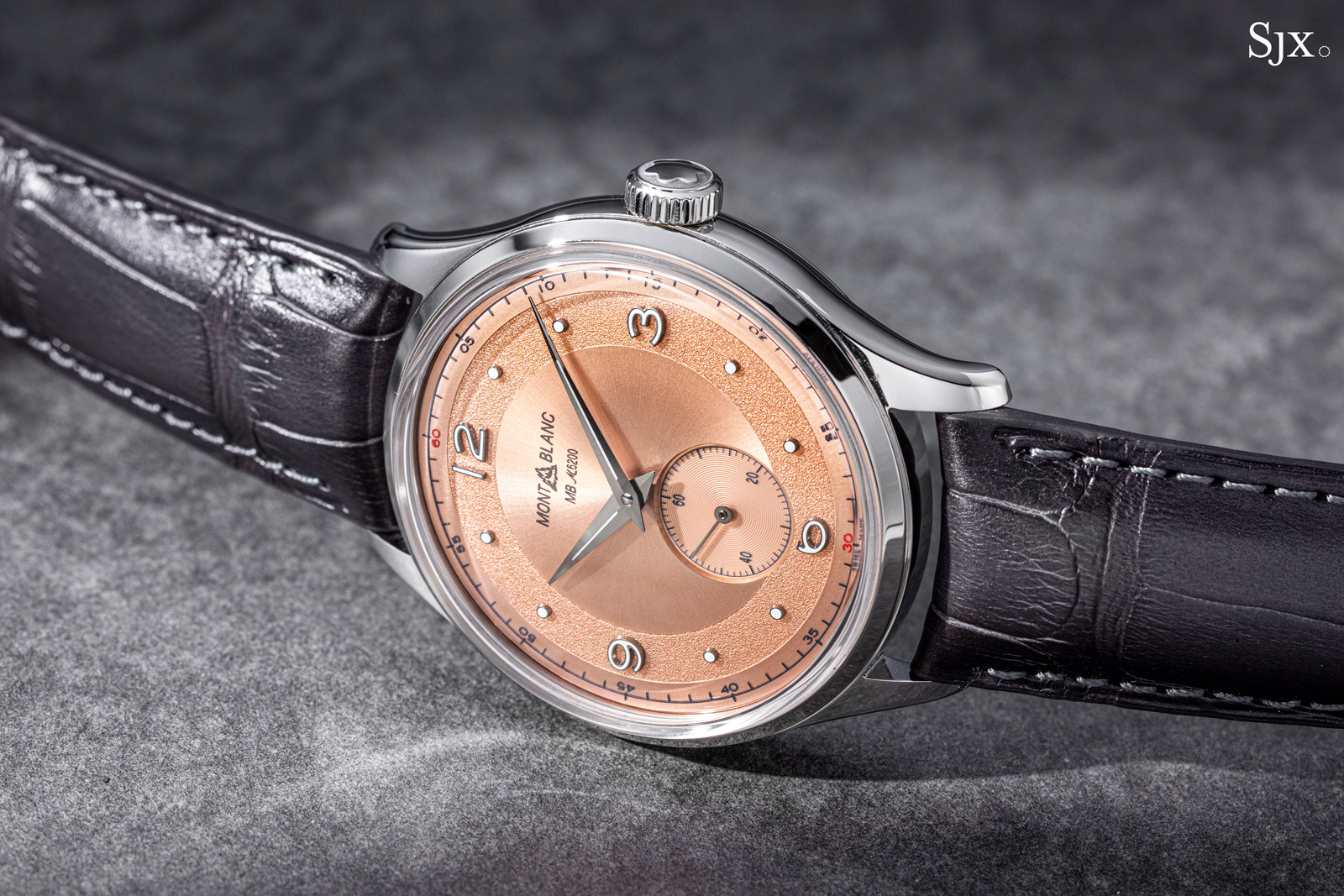
That said, the case is still quite a bit larger than the movement, which is why the seconds register sits a noticeable distance away from the edge of the dial. And on the back it is even more obvious, with the case back wide enough to accommodate two rows of engraving that leave it looking a bit cluttered.
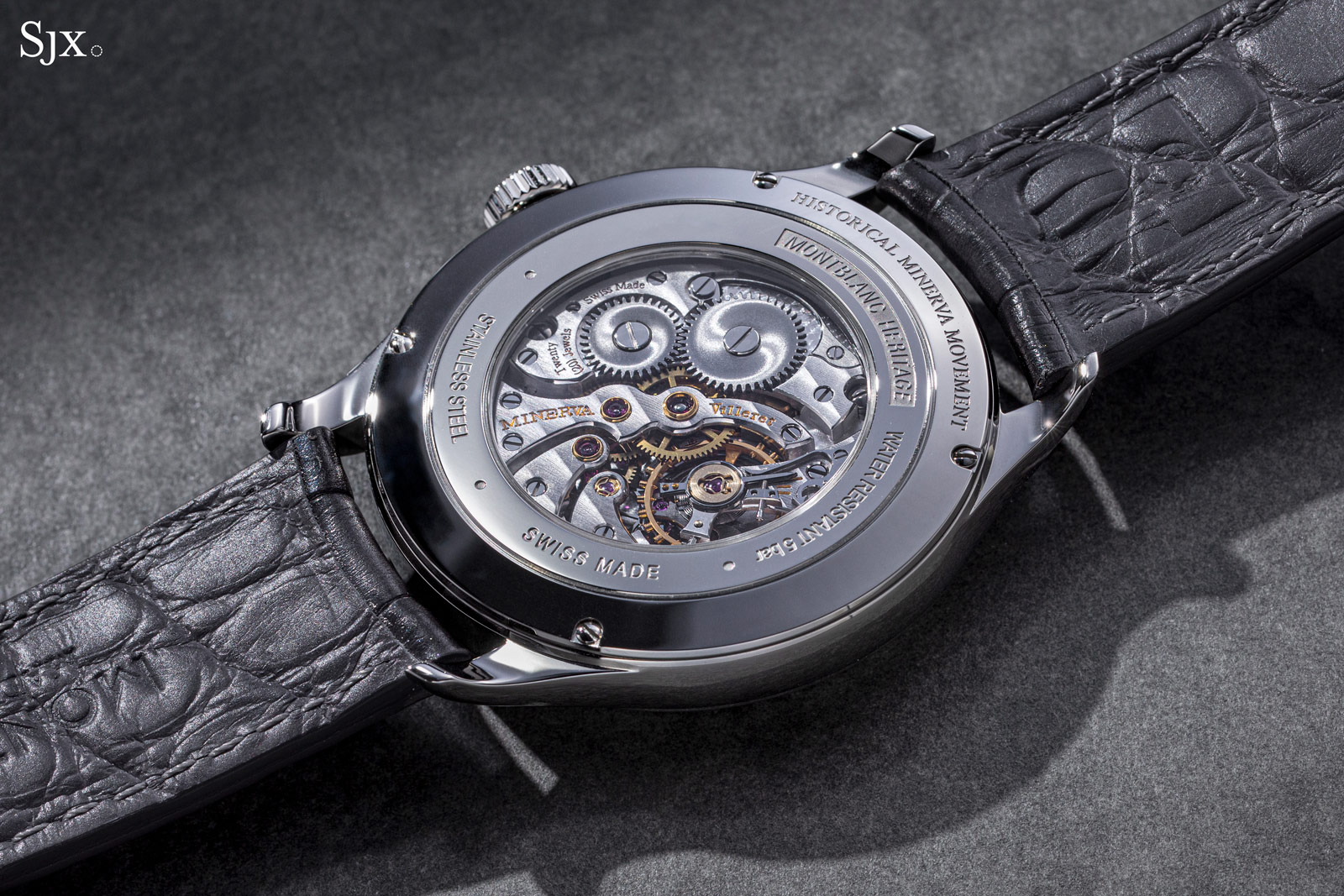
The case is straightforward – rounded in form and entirely polished. It’s essentially identical to the other offerings in the Heritage collection, which isn’t as fancy as one expects on a watch of this price, however, this is entirely reasonable since it is obvious that majority of the effort went into the movement.
Simple as it is, the case does have boast pleasing detail in the form of a domed sapphire crystal that brings to mind the plastic crystals of vintage watches.
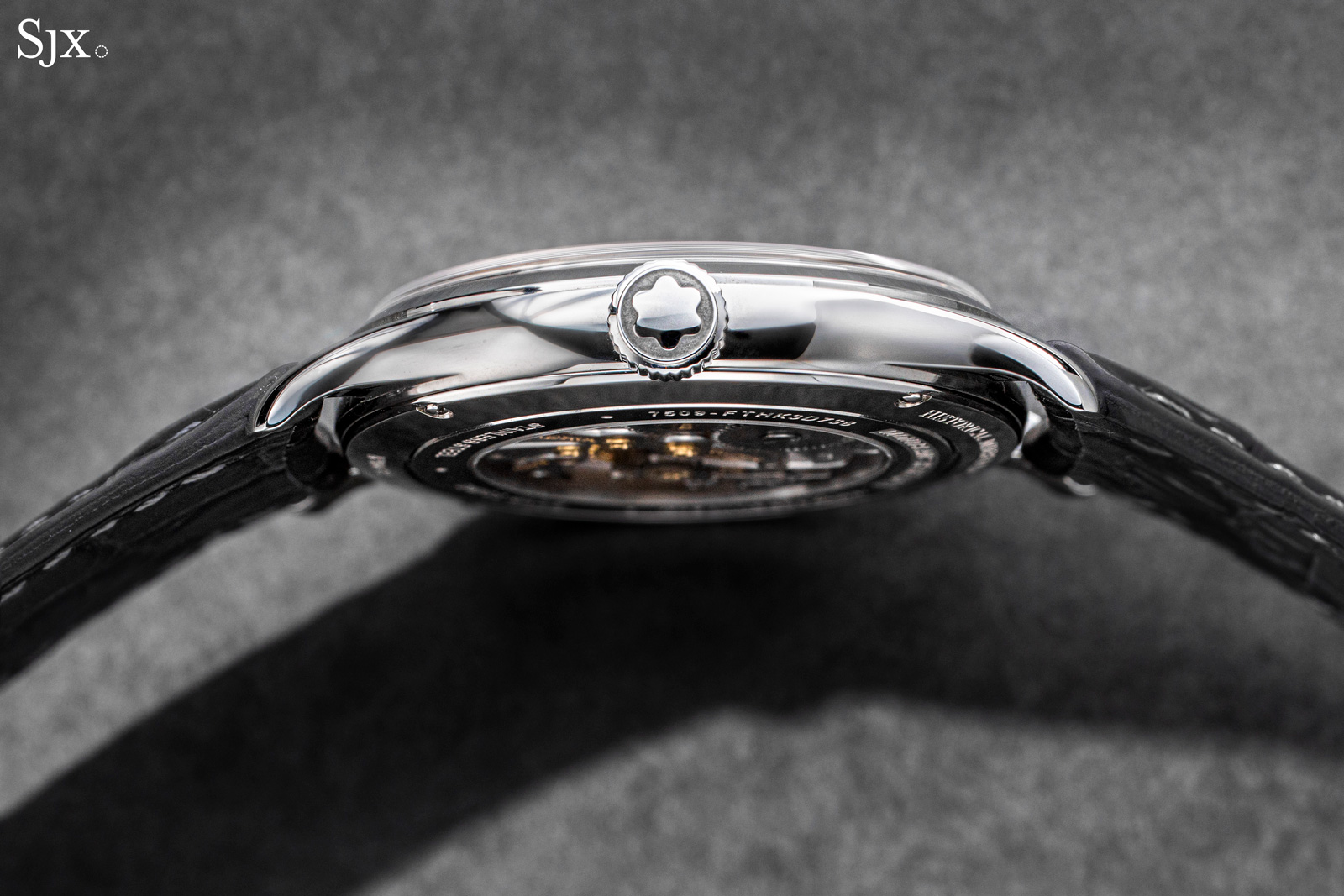
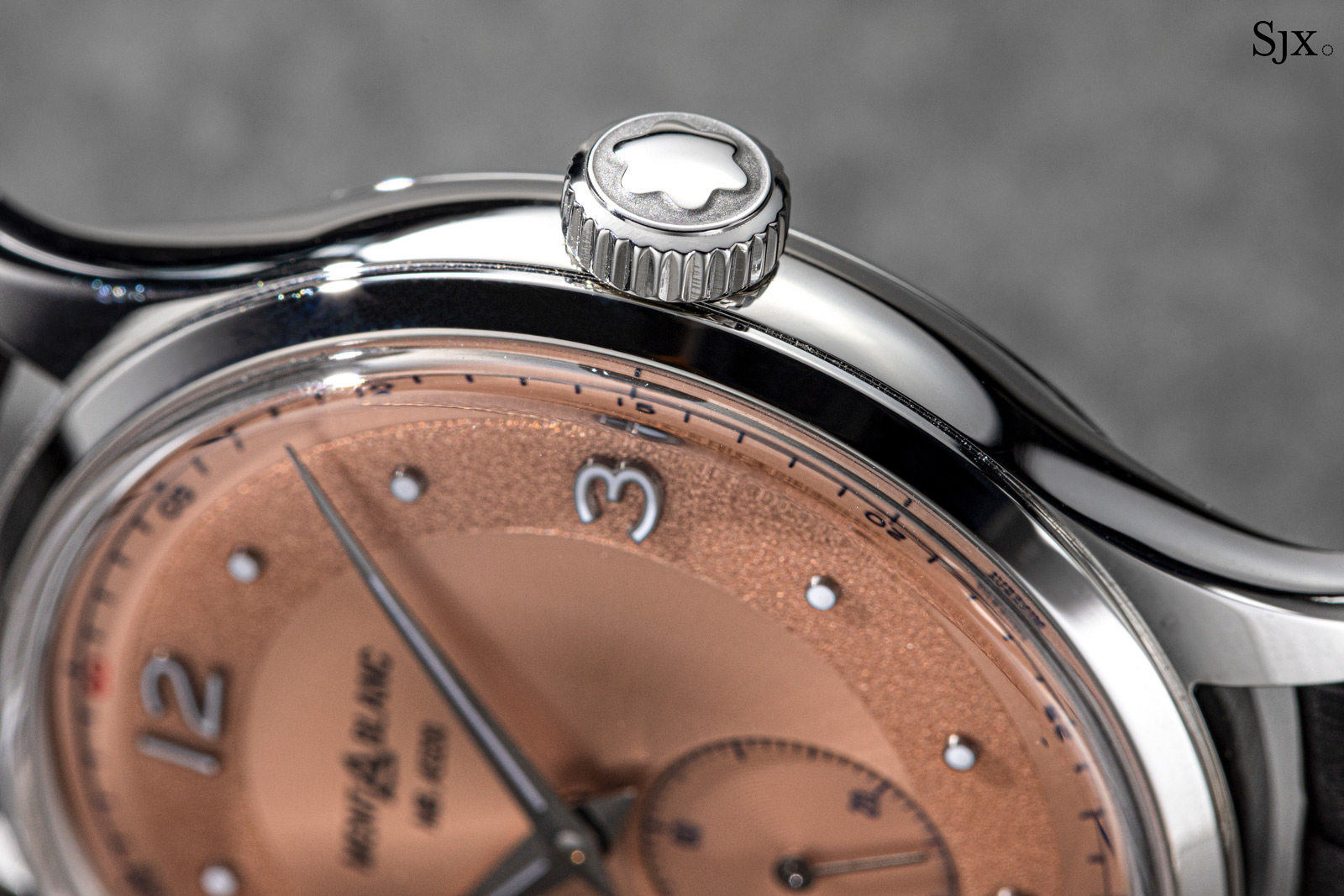
MB M62.00
At the heart of the Heritage Small Second is the MB M62.00, a hand-wound movement created in the early 2000s during the Gnutti ownership of the brand. Since it has largely focused on chronographs and tourbillon watches for its high-end offerings, Montblanc has used this time-only calibre only sparingly.
The movement was last found in the Villeret Seconde Authentique, a limited edition of just 58 pieces from 2013. While the Villeret featured a far more elaborate case and dial, it cost four times as much as the Heritage Small Second, illustrating the value proposition of the latter.
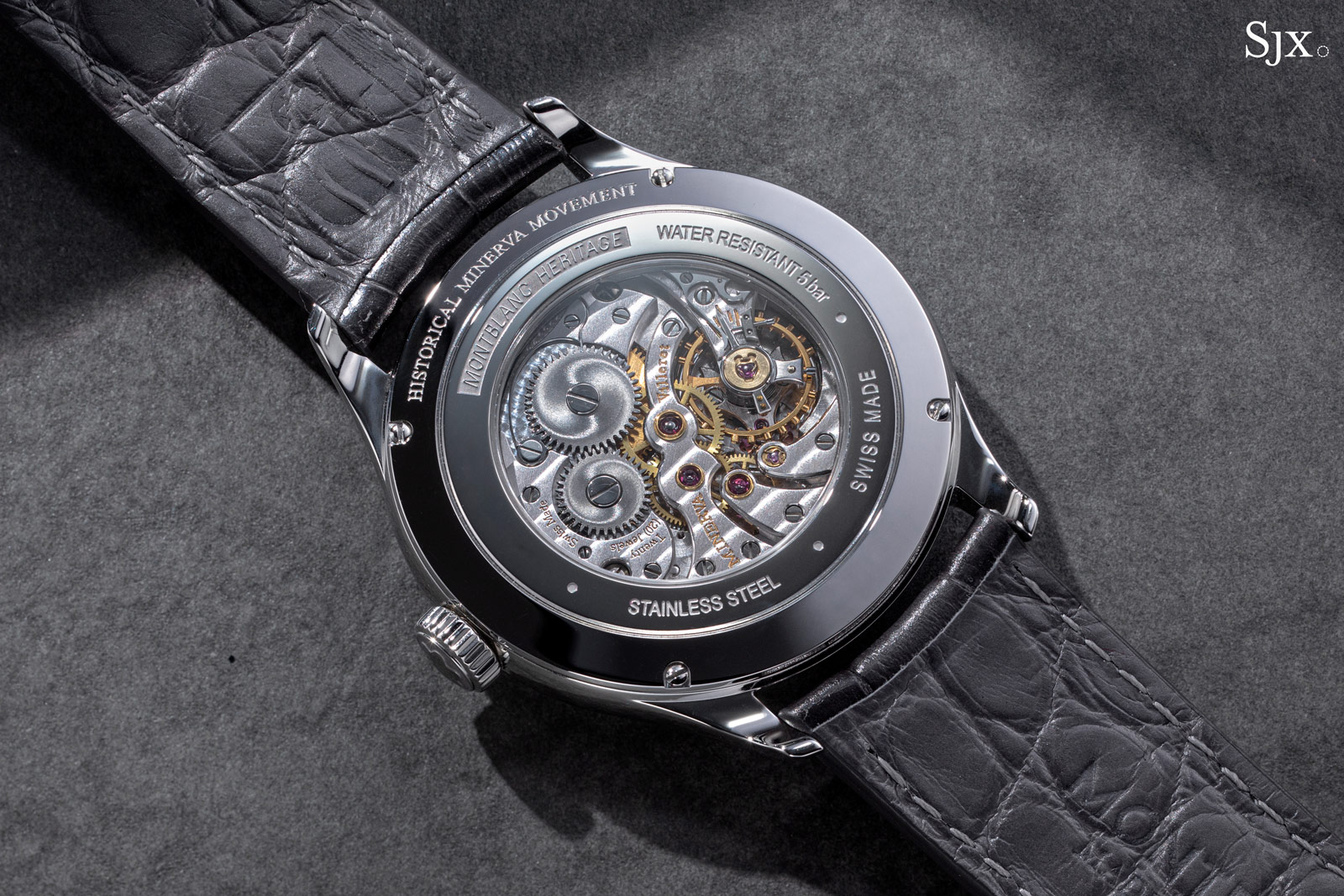
The MB M62.00
But the 58 Villeret watches still left some movements unused. According to Montblanc, 38 movements were retrieved from the archives for this Heritage limited edition. These movements were all completed prior to the Montblanc takeover, so they bear the “Minerva” and “Villeret” engravings on their bridges, giving them added pedigree.
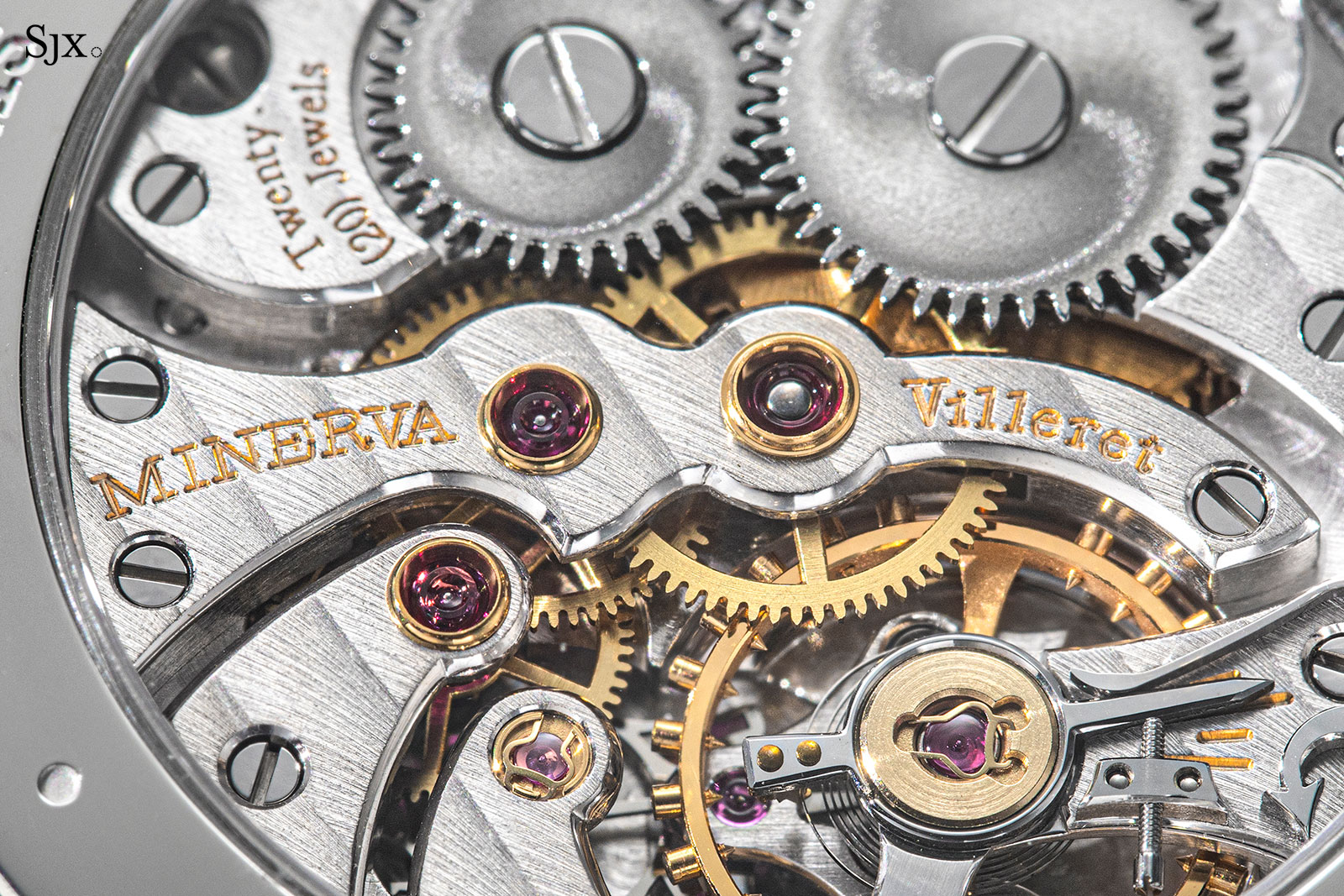
The MB M62.00 is essentially a cal. 48 that’s been facelifted with new redesigned bridges and stellar decoration. Gone are the linear bridges of the cal. 48, which have been replaced by elegantly curved bridges.
Even details like the regulator index were refined: the plain pointer index of the cal. 48 was replaced with a swan’s neck regulator that incorporates the “devil’s tail”, a flourish taken from the levers of Minerva’s chronograph movements (and in turn inspired by the arrow-shaped Minerva logo of old). Another upgrade was the addition of a slender steel spring for the winding click – not imperative but certainly beautiful.
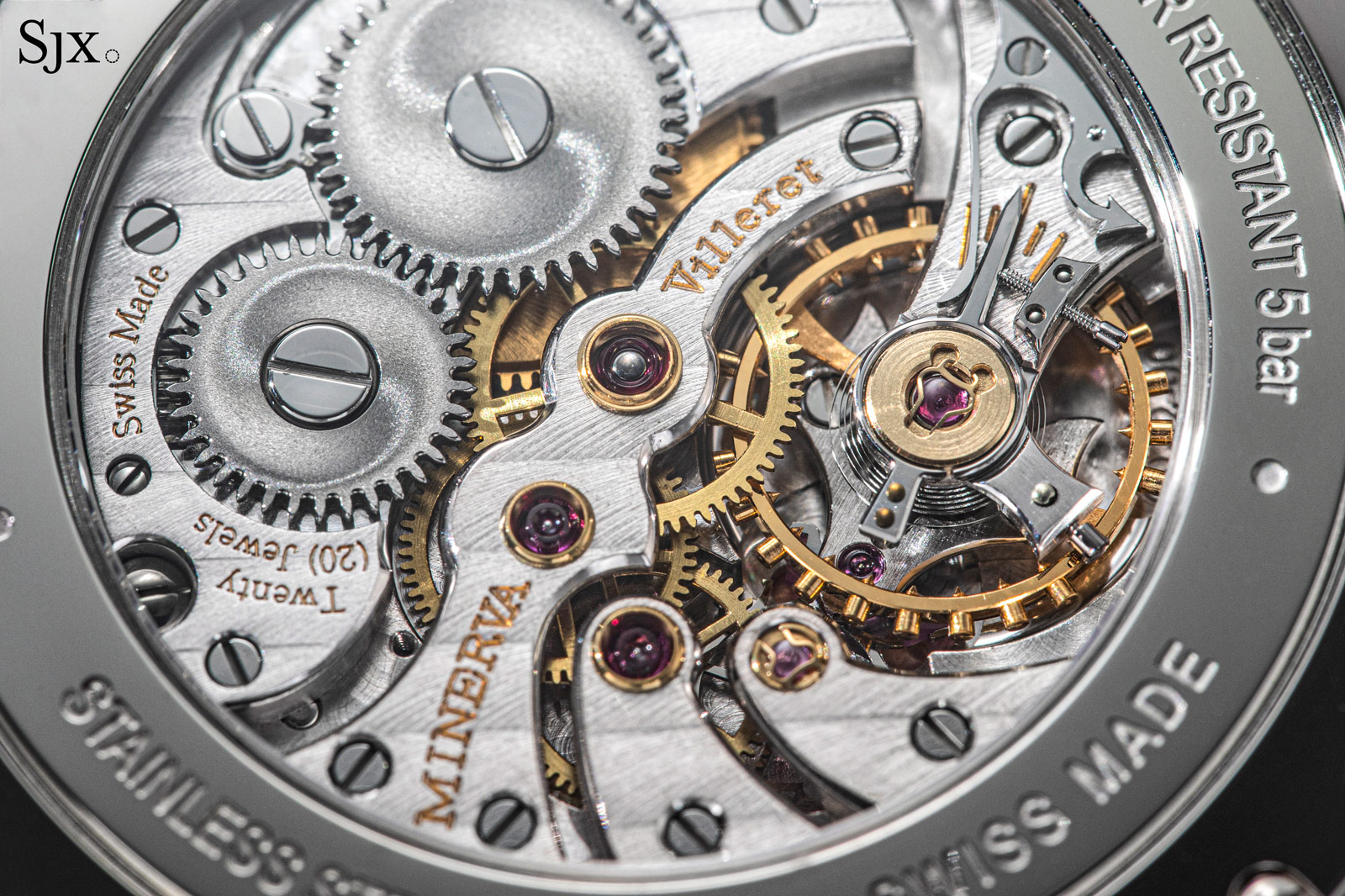
Like all Minerva movements used by Montblanc, the MB M62.00 utilises a screwed balance wheel with an in-house hairspring
To go along with the classically styled movement is top-class finishing. In fact, the quality of the decoration is comparable to that of high-end independent watchmakers. Being a new-old-stock movement, the calibre does reveal a handful of stray marks in less obvious places like the base plate. They do not detract from its appeal, and add to the vintage charm.
As with most of the Gnutti-era movements, emphasis was placed on decoration. This is clearly seen in the hand-polished bevels and striping on the bridges, as well as the lustrous sunray-brushing on the barrel and ratchet wheels with polished teeth. The same level of effort is visible in the steel parts, namely the black-polished regulator index along with the polished and chamfered screw heads.
With its high level of finishing, the MB M62.00 elevates the Heritage Small Second to the realm of exceptional time-only watches in terms of quality, though not in price.
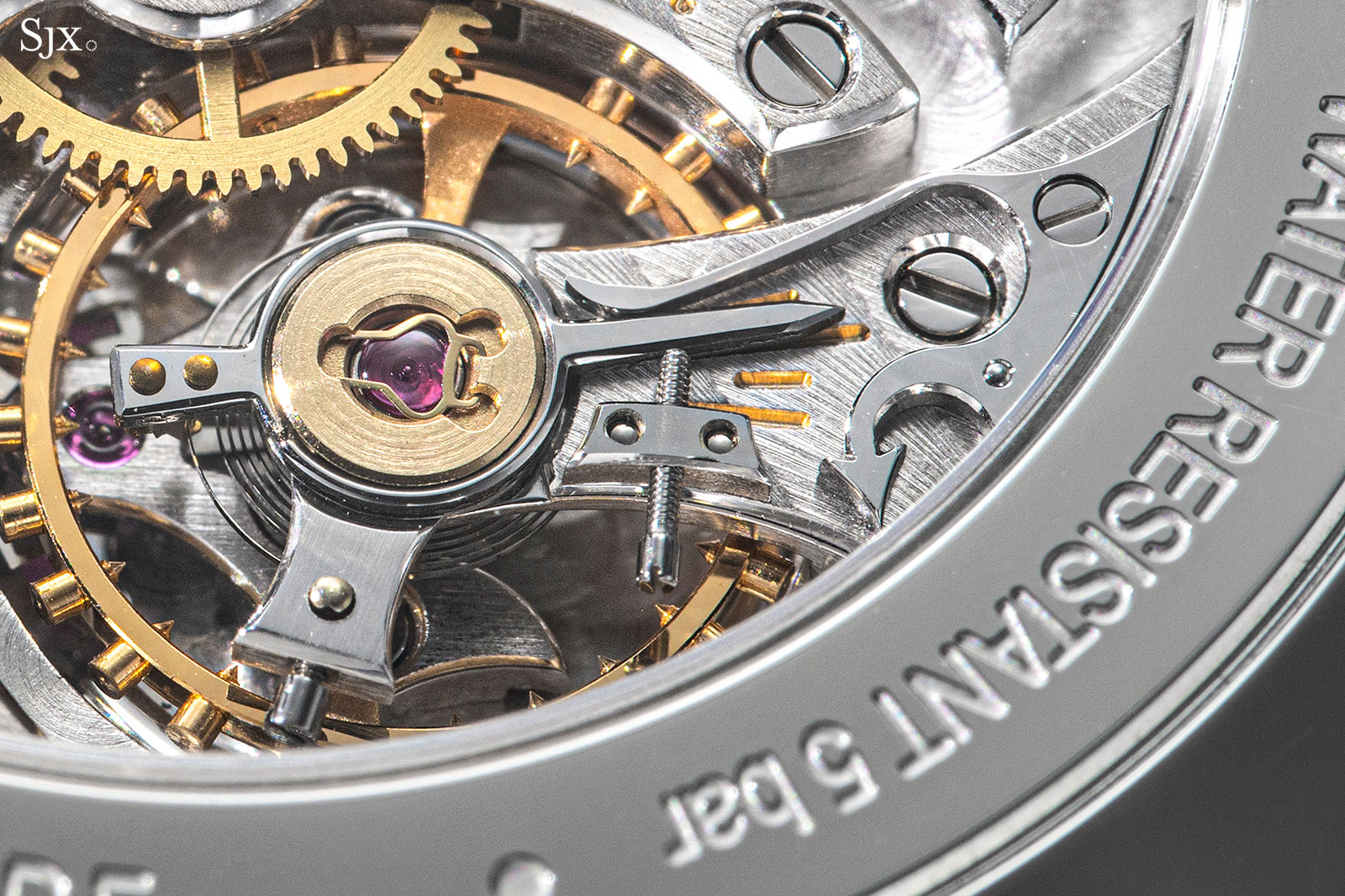
The black-polished regulator index
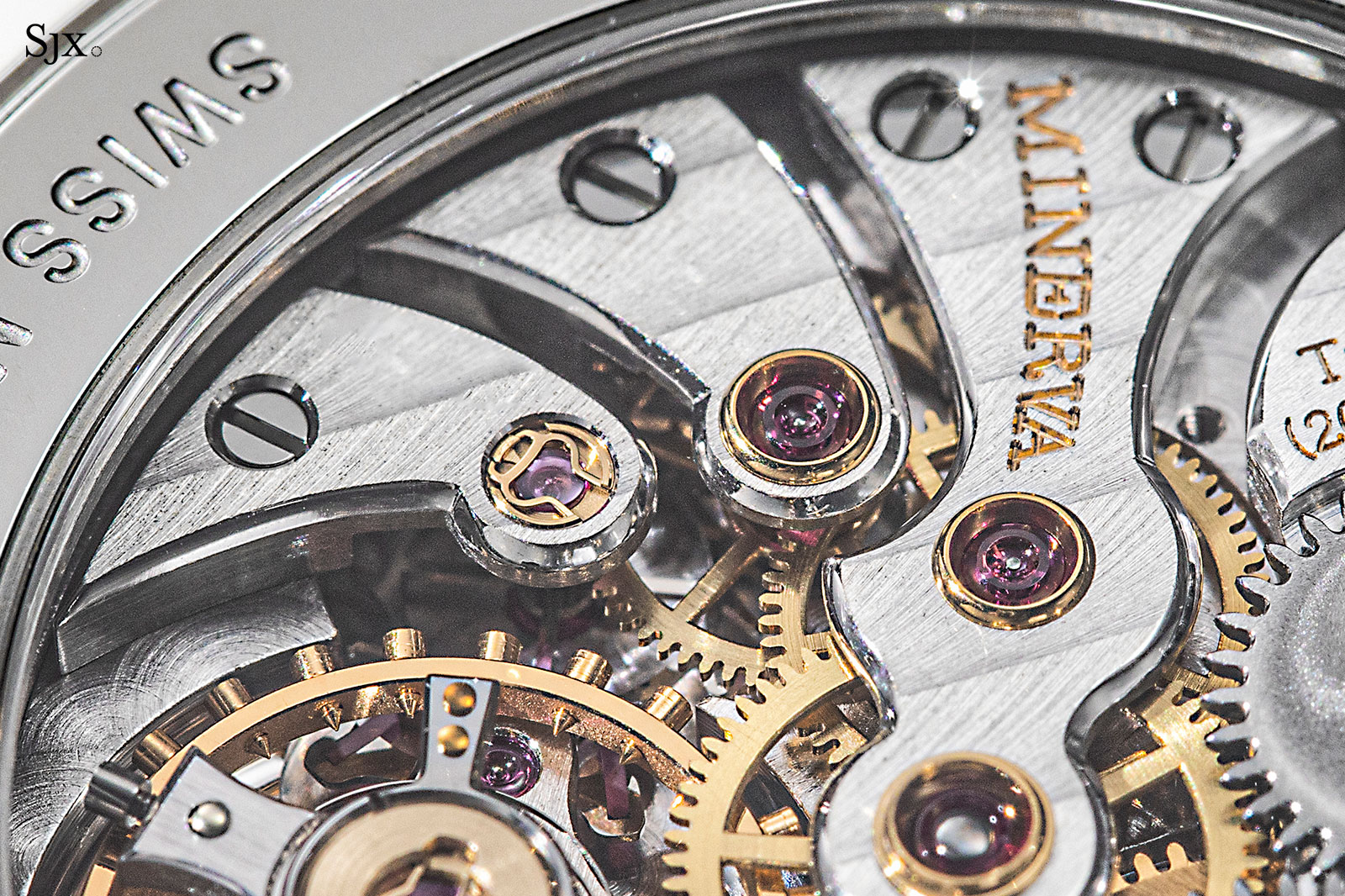
The bridges all sport prominent bevels
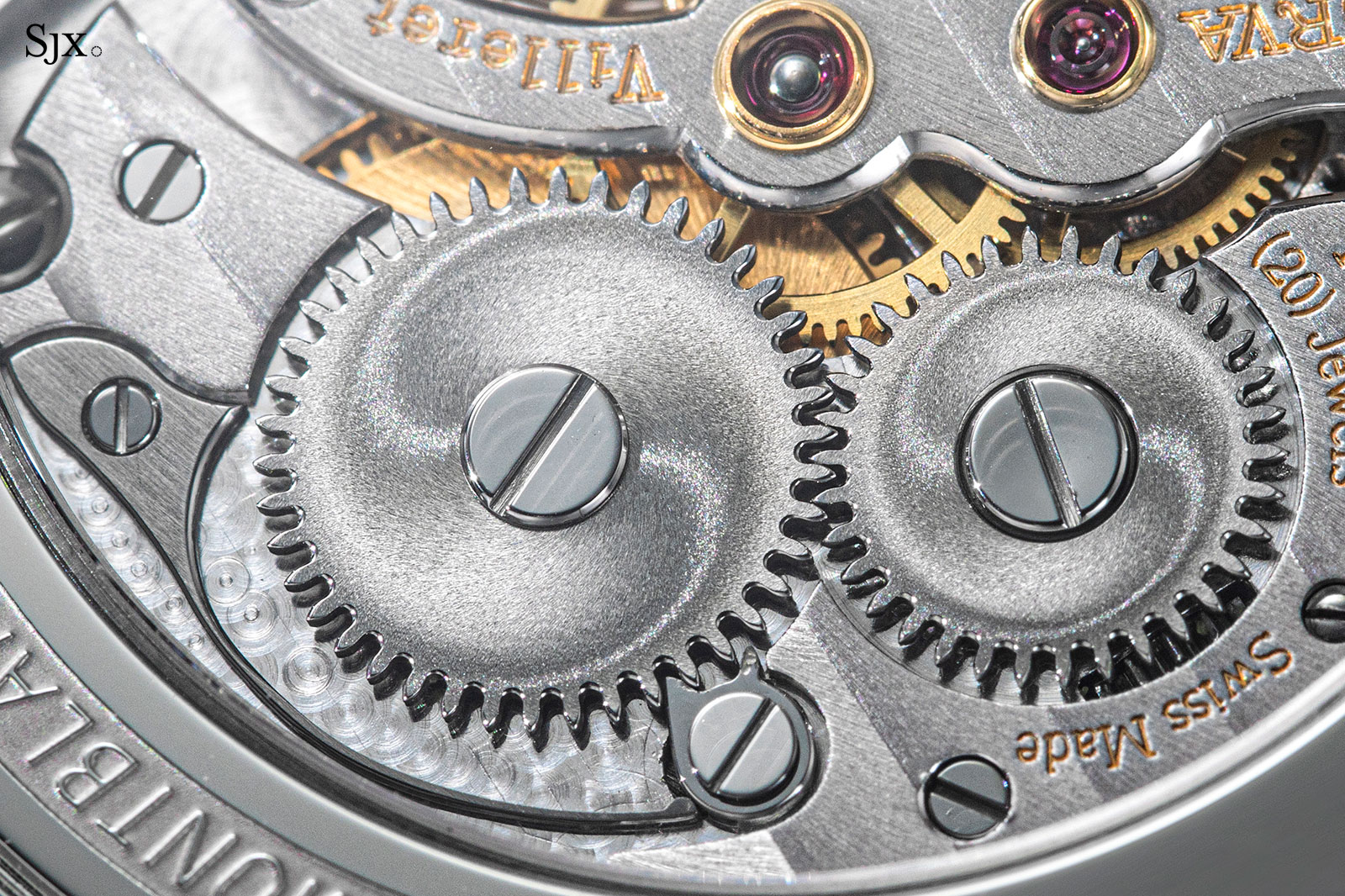
The winding wheels feature polished teeth, while the winding click spring has finely bevelled edges
Concluding thoughts
The Heritage Small Second is a carefully conceived timepiece that combines retro styling with a gorgeous movement. Despite the vintage-inspired styling, it is an obviously modern watch on the front, but the case back reveals its true nature and obvious quality. The watch is certainly a standout amongst its contemporaries, offering perhaps the best movement finishing in the price segment.
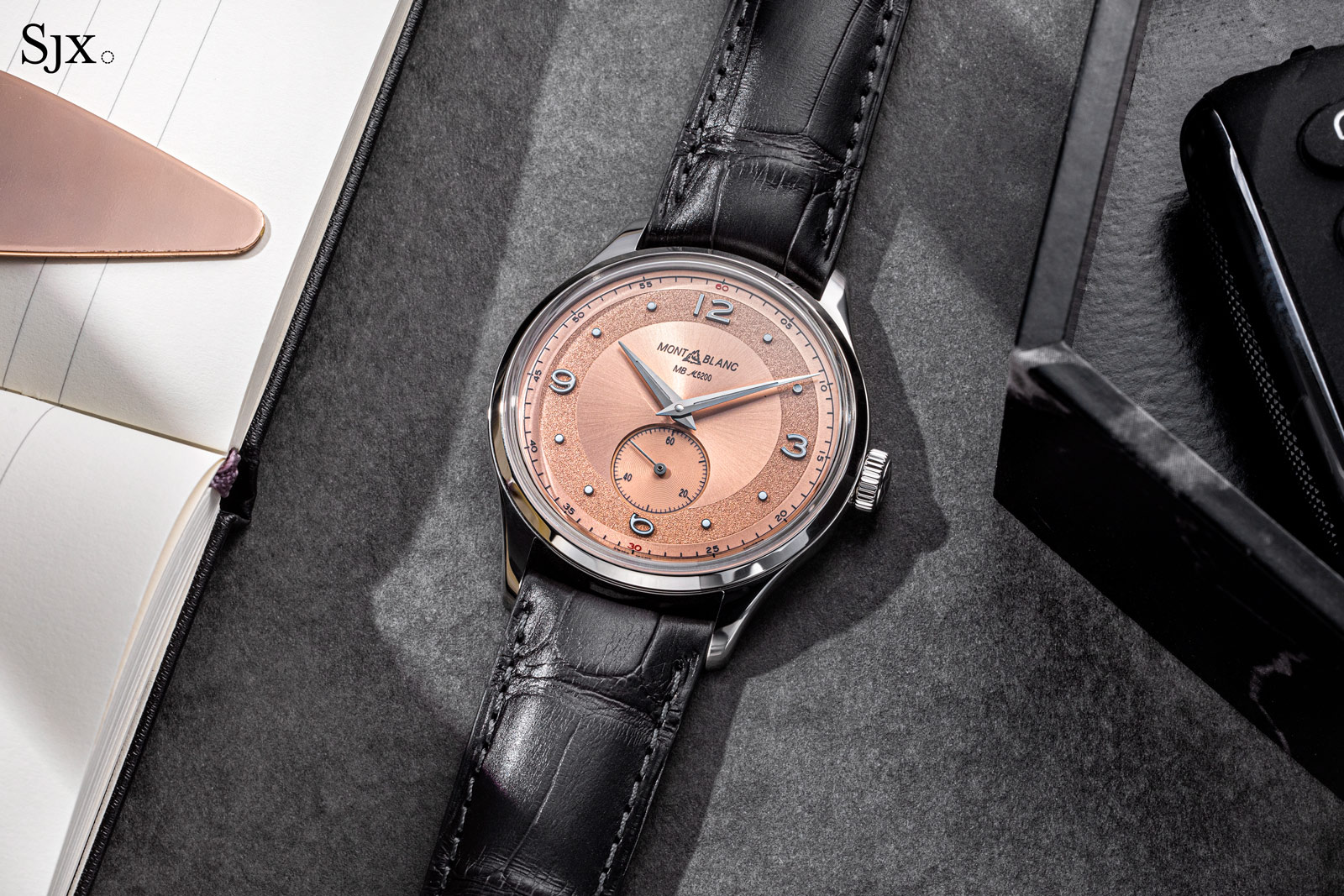
Key Facts and Price
Montblanc Heritage Small Seconds Limited Edition 38
Ref. 124781
Diameter: 39 mm
Height: 8.9 mm
Material: Steel
Water resistance: 50 m
Crystal: Sapphire
Movement: MB M62.00
Functions: Hours, minutes, small seconds
Winding: Hand wind
Frequency: 18,000 beats per hour (2.5 Hz)
Power reserve: 50 hours
Strap: Alligator strap with folding clasp
Limited edition: 38 pieces
Availability: Launched in 2019 and probably sold out
Price: US$18,900
For more, visit Montblanc.com.
Back to top.

